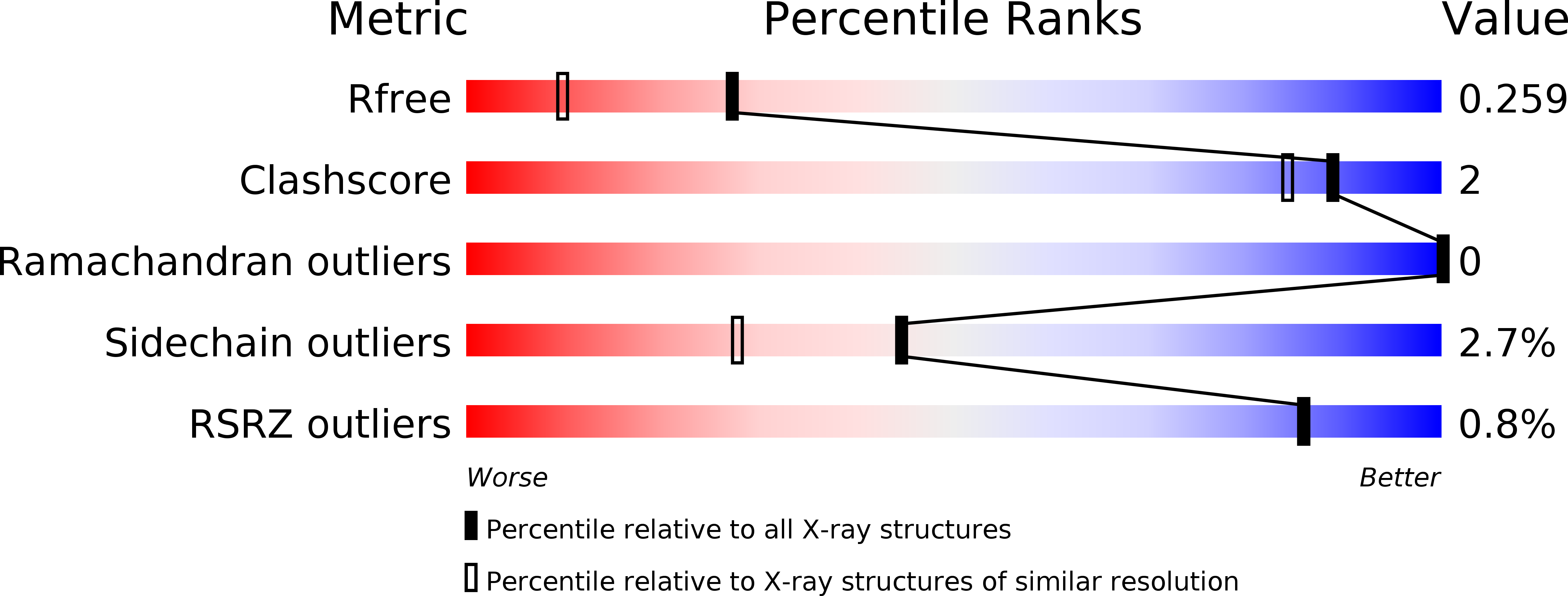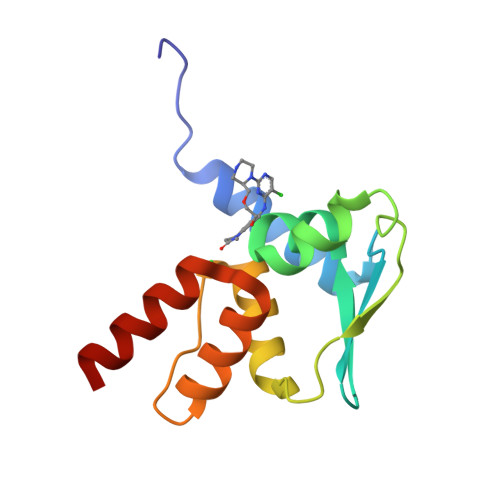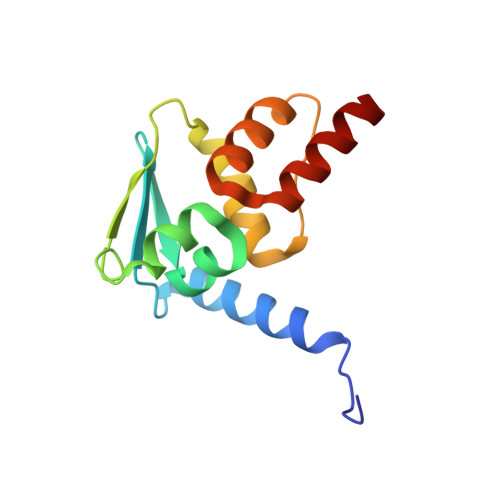Development of a Novel B-Cell Lymphoma 6 (BCL6) PROTAC To Provide Insight into Small Molecule Targeting of BCL6.
McCoull, W., Cheung, T., Anderson, E., Barton, P., Burgess, J., Byth, K., Cao, Q., Castaldi, M.P., Chen, H., Chiarparin, E., Carbajo, R.J., Code, E., Cowan, S., Davey, P.R., Ferguson, A.D., Fillery, S., Fuller, N.O., Gao, N., Hargreaves, D., Howard, M.R., Hu, J., Kawatkar, A., Kemmitt, P.D., Leo, E., Molina, D.M., O'Connell, N., Petteruti, P., Rasmusson, T., Raubo, P., Rawlins, P.B., Ricchiuto, P., Robb, G.R., Schenone, M., Waring, M.J., Zinda, M., Fawell, S., Wilson, D.M.(2018) ACS Chem Biol 13: 3131-3141
- PubMed: 30335946
- DOI: https://doi.org/10.1021/acschembio.8b00698
- Primary Citation of Related Structures:
6EW6, 6EW7, 6EW8 - PubMed Abstract:
B-cell lymphoma 6 (BCL6) inhibition is a promising mechanism for treating hematological cancers but high quality chemical probes are necessary to evaluate its therapeutic potential. Here we report potent BCL6 inhibitors that demonstrate cellular target engagement and exhibit exquisite selectivity for BCL6 based on mass spectrometry analyses following chemical proteomic pull down. Importantly, a proteolysis-targeting chimera (PROTAC) was also developed and shown to significantly degrade BCL6 in a number of diffuse large B-cell lymphoma (DLBCL) cell lines, but neither BCL6 inhibition nor degradation selectively induced marked phenotypic response. To investigate, we monitored PROTAC directed BCL6 degradation in DLBCL OCI-Ly1 cells by immunofluorescence and discovered a residual BCL6 population. Analysis of subcellular fractions also showed incomplete BCL6 degradation in all fractions despite having measurable PROTAC concentrations, together providing a rationale for the weak antiproliferative response seen with both BCL6 inhibitor and degrader. In summary, we have developed potent and selective BCL6 inhibitors and a BCL6 PROTAC that effectively degraded BCL6, but both modalities failed to induce a significant phenotypic response in DLBCL despite achieving cellular concentrations.
Organizational Affiliation:
Oncology and Discovery Sciences, IMED Biotech Unit , AstraZeneca , 310 Cambridge Science Park, Milton Road , Cambridge CB4 0WG , U.K.




















